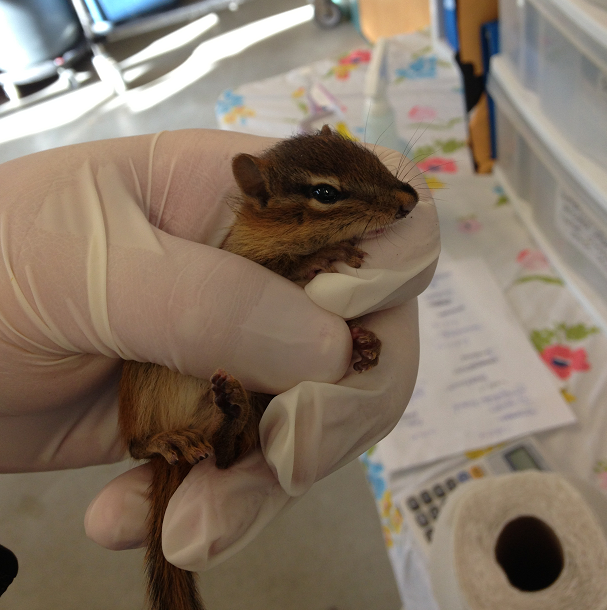
The first thing that happens when an animal comes into our hospital is a diagnosis. You can’t treat something without a basic idea of what’s wrong with it, in fact many treatments can do more harm than good if given in the wrong situation. Even if the diagnosis isn’t complete at first, the veterinarian tries to identify what about the animal is normal and what is not in order to get a starting point for a care plan.
When trying to find out what is wrong with an animal, the first thing to do is observe how they act before they are picked up and handled. Seeing how an animal acts when it is still inside whatever case or cage it was brought in can be very enlightening. For example, whether an animal is lying down, crouching, leaning abnormally on some part of its body, or standing straight without difficulty are all important signs to note. Once an animal has been grabbed and is being handled, the stress can cause signs like labored breathing and difficulty walking even in animals that normally wouldn’t exhibit these problems.
When performing a physical exam on an animal, it is important to have a ritual. That means that the exam is performed the same way every time, although allowances are of course made for different species having different shapes and body parts. This helps make sure that no area is missed, as jumping around from body part to body part without a defined pattern can lead to small areas being missed or forgotten. Physical exams can tell quite a lot about an animal, and many of our diagnoses are made at this point and only need confirmation later on. For example, a bird that can’t fly and has difficulty balancing with visible swelling around the head likely suffered a concussion from an in-flight collision. More work would be needed to confirm this diagnosis, but it is generally readily visible and a treatment plan can be started immediately.
The two most common means of following up on a physical exam in our hospital are X-rays and bloodwork. X-rays mostly show us the bone structure of an animal, and can be used to diagnose small fractures or find foreign materials such as small bullets that have lodged in the animal or objects that were eaten and can’t pass through the digestive system. Bloodwork is a general term for a large array of techniques used to analyze an animals blood. This can tell us if the animal is dehydrated, if they have an active infection, or if they have significant inflammation. Some other follow-up techniques that require an outside laboratory are feces analysis and blood toxicology. Feces analysis mostly finds parasites, while blood toxicology is just more in-depth blood work that can identify specific bacteria or viruses that have infected the animal, toxins like lead that the animal has come in contact with, and various other specific pieces of information.
These are generally the tools we use to diagnose animals and prepare them for a comprehensive, efficient, and effective treatment plan.

